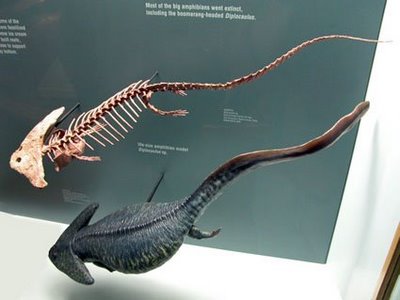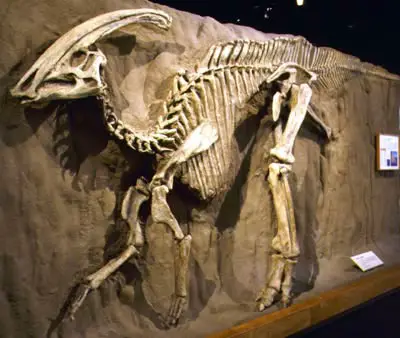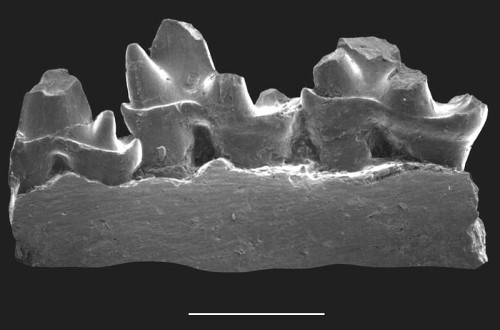Diplocaulus
The Diplocaulus was a peculiar reptile, whose head was boomerang-shaped. This helped the creature to maneuver through water, especially to quickly rise to the surface to catch a swimming prey. The shape of its head is so strange that some scientists, upon discovering fossils of the Diplocaulus, raised a theory that the creature had a hormonal disorder.
This ancient creature lived 280 million years ago and fossils have been found in the states of Texas and Oklahoma in the area that is now the United States, as well as in Morocco, Africa. Diplocaulus sized 1,3 metres on average and computer simulations show that it weighed around 15 kilograms, which makes them one of the lightest animals of the dinosaur age. The reptile’s body was flattened to grant better hydrodynamics, which were further improved by the long, muscular tail that helped as an oar. Both sides of the animal’s skull were extremely elongated, which increased swimming speed in water, similar to a ship’s front part that breaks water, making it go sideways.
Diplocaulus spent most, if not all, of its time in water, because the extremities were not well suited for walking on dry land. It is, however, possible that mature individuals developed lungs and started breathing air. Modern research shows that the body of this animal required very little oxygen, so it is suggested that Diplocaulus spent much time lying at the bottom of the water basin, which also means that the reptile had camouflage colours to blend in and become unseen at the river bottoms.
For a long time, the shape of the Diplocaulus’ skull was a mystery to scientists. Fossil discoveries show that only mature individuals have this abnormality, while younger specimen only had small horn-like growths. Many theories were brought up, in regards to what purpose this skull structure served, until in 1980 through a scientific study it was proved that if not positioned horizontally, the skull breaks water streams in a way that the creature started emerging.
The small size of the Diplocaulus suggests that it could have been prey to many larger water creatures, for instance, the more than 4 meter long freshwater sharks that lived during the same period. Some theories suggest that Diplocaulus’ skull helped scare enemies, as well as protect them from being eaten whole, while the long, whip-like tail was probably used as a weapon. Still, among all the dinosaurs, Diplocaulus was probably one of the most vulnerable to other water predators.
Although not much information has been found out about the lifestyle of Diplocaulus, they are still a rather arabesque creatures of the dinosaur age and the way how they managed to survive will probably remain a mystery.





THIS IS GREAT!!!
“The Diplocaulus was a peculiar reptile…”
Wasn’t it an amphibian? Strange…
“Still, among all the dinosaurs…”
It became extinct before the first dinosaurs appeared, and again: it was an amphibian…